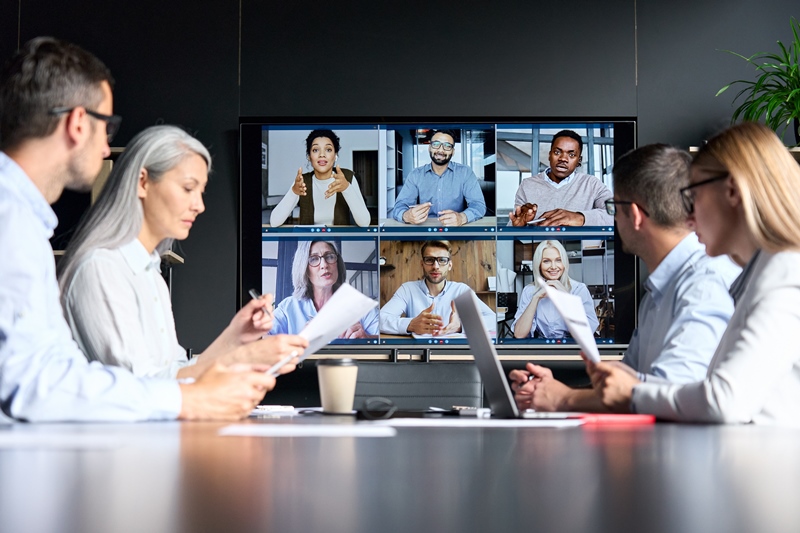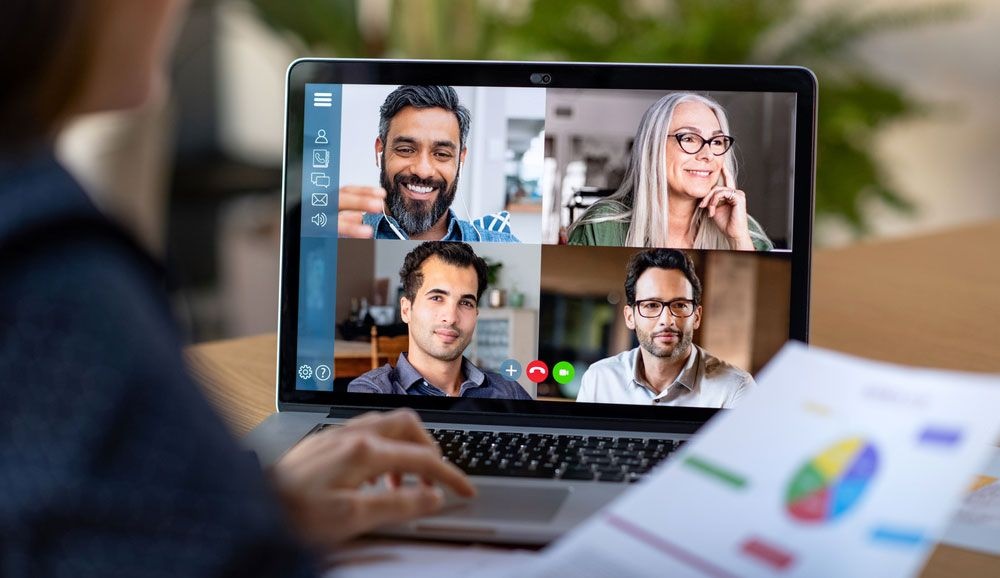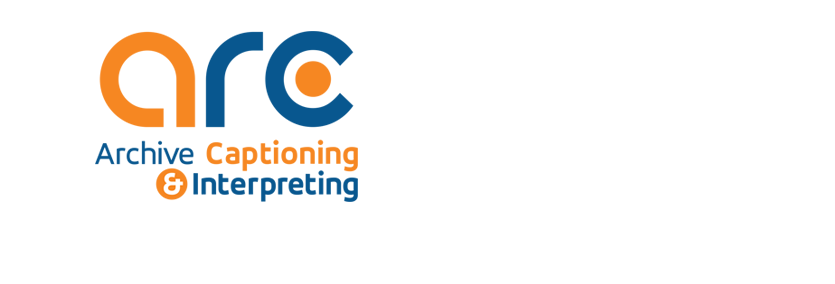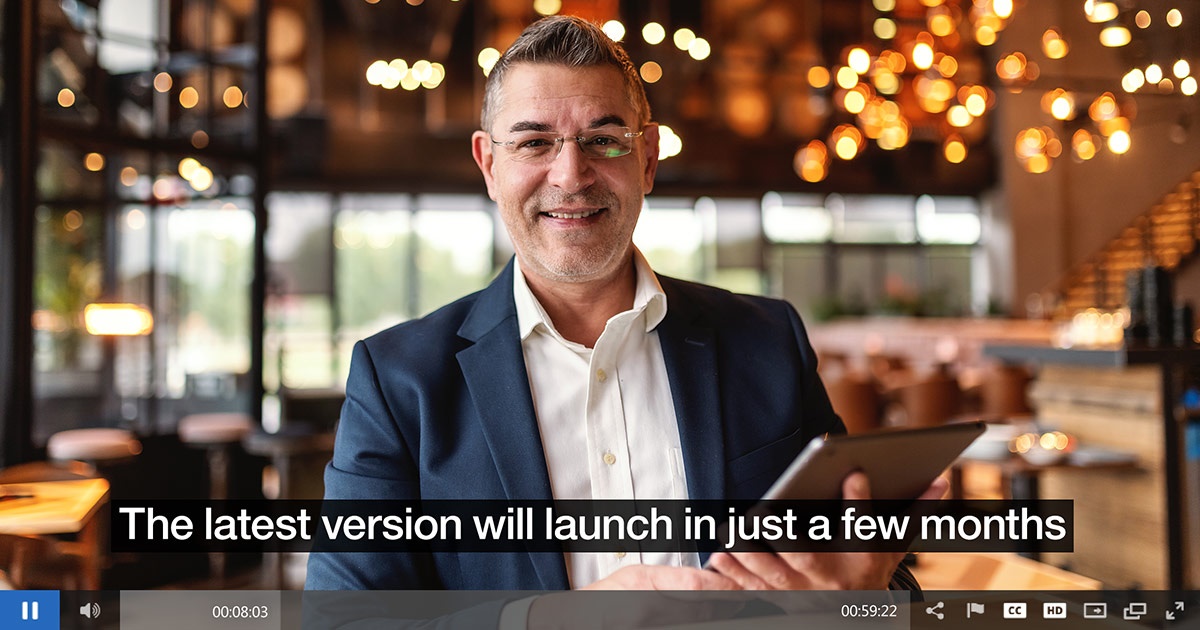TypeWell and C-Print Services
- Details
-
Created: Wednesday, 27 June 2018 19:14
-
Written by chopkins
For a condensed, easy-to-read transcript, many of our customers request C-print or TypeWell services. These technologies rely on transcribers using abbreviation software that allows them to capture the meaning of what’s said in real time. Consumers can follow along with the class using streaming software such as Streamtext. This process eliminates redundancy and erroneous words–you read what the speaker means, not the exact words that the speaker is saying. After the session is over, the provider will lightly edit the transcript and forward it to the consumer.
These technologies are typically used remotely with the text being displayed on a laptop or smartphone. The provider will need a way to listen in to what's being said in the classroom or meeting, usually with Zoom, Teams or another virtual meeting software. The user views the text in real time as it is being presented through their web browser or on a smartphone or tablet.
Because TypeWell and C-Print use transcribers and not stenographers, they have the benefit of being significantly less expensive than CART. TypeWell and C-Print transcribers use specialized abbreviation software to transcribe the content of the class or lecture. TypeWell and C-print are a great fit for less technical classes where a verbatim transcript is less important. TypeWell iand C-Print are often used in classrooms as well as in an increasing variety of business settings and webcasts.
How does TypeWell compare to CART?
TypeWell and C-Print are similar to CART (communication access real-time translation) in that the service providers for both systems can provide a real-time display of the spoken information and transcript (notes). Typewell and C-Print providers, however, provide a meaning-for-meaning representation of the spoken information versus verbatim, which has traditionally been the goal of CART providers.
CART is a stenography-based system that requires stenography equipment and at least two years of specialized training (similar what is used for television closed captioning in a courtroom).
What is meant by meaning-for-meaning?
A meaning-for-meaning representation of the spoken information is a concise and thorough interpretation of the spoken content. It is content-based (similar to an interpreter) rather than verbatim.
For example:
Original lecture: "This course is about the, um, perception of the role of women in society, and how that role has evolved. Evolved over time. As well as how the role has changed in the, uh, workplace, and, changed in the workplace and at home.
TypeWell text: This course is about the perception of the role of women in society and how that role has evolved over time, both in the workplace and at home.
To learn more about TypeWell and C-Print services or to find out if these services are right for you or your organization, call us at 800-870-1795 or This email address is being protected from spambots. You need JavaScript enabled to view it.. We'll work with you to determine which service is the best fit for you
Terms of Service
- Details
-
Created: Tuesday, 29 May 2018 18:39
-
Written by chopkins
CART, Remote CART and Broadcast Captioning Terms and Conditions of Service
1. REQUESTS FOR SERVICE
1.1 Requests should be made to directly to your Business Coordinator. Requests may be made by phone, email, fax or Skype. We can be reached at This email address is being protected from spambots. You need JavaScript enabled to view it. or This email address is being protected from spambots. You need JavaScript enabled to view it., or by calling 800-870-1795 x2.
1.2 The person requesting service shall provide the following information;
- Name and contact information of the person making the request;
- The date, start time, duration and location of assignment;
- Nature of service [CART, Remote CART, Webinar Captioning, Broadcast Captioning, Transcription, VRI]
- Languages required
- Names of participants in the assignment;
- The type/details of assignment, including preparation material if available
- Whether a transcript (edited or unedited) is required for the request
- For CART service; Preferred service delivery method [Onsite or Remote service]; if any
- For remote CART service; the method by which (and relevant information related to how) audio will be transmitted to the captionist
- Name and contact information for any designated Audio/Video or Technical support person associated with the request; and/or Name and contact information for someone responsible for troubleshooting during the provision of service
- Name and contact information of the person who will receive the invoice;
1.3 When scheduling, it is important that clients reserve service time accurately, taking in to account possible time overruns (see Section 9, Terms of Service).
1.4 All requests will be acknowledged (usually by email) within one (1) business day. If an acknowledgement is not received, the requester should contact us immediately.
1.5 The person making the request will be the sole contact person for the request unless a different contact person is assigned by the requester. If the requester is not directly associated with the agency, business, or service responsible for the cost of service, a representative from the applicable agency, business or service will be contacted to confirm service and be notified of the applicable terms.
1.6 Regardless of who initiates the request, the agency, business or service deemed to be the primary provider of service will be responsible for adhering to all CART and Broadcast Captioning Terms and Conditions and applicable rates.
2. SERVICE DELIVERY METHOD
2.1 Captioning service may be delivered through various methods;
- Remote CART service [when captioning is used directly for accessibly of one or more participants; captionist(s) are off site, providing captioning via a secured internet feed]
- On-site CART service [when captioning is used directly for accessibly of one or more participants; all participants and the captionist(s) are in one location] (availability of Onsite service may be limited in some regions)
- Webinar or Broadcast captioning [when captioning is used indirectly for accessibly of one or more participants; captionist(s) are off-site, providing captioning via internet which is embedded into the live video feed]
2.2 All options will be considered, in consultation with the participants, to determine which methods are viable and which is the most appropriate prior to confirming service.
2.3 Regardless of the service delivery method, all Terms and Conditions of Service will apply.
3. CONFIRMATION OF SERVICES
3.1 Requests will be received and processed by a designated Business Coordinator.
3.2 The Coordinator will confirm receipt of requests, typically within one business day.
3.3 The Coordinator will secure a captionist (subject to availability).
3.4 A confirmation email will be sent by the Coordinator when a captionist is secured. At this point, the event will be considered confirmed and all CART and Broadcast Captioning Terms and Conditions will apply (please note Section 7, Cancellations).
3.5 A subsequent email will be sent to the requester in the days prior to the event. This email will contain all information necessary for accessing the caption feed. The requester will be responsible for ensuring all parties needing access receive this information.
4. TECHNICAL & AUDIO CONNECTIONS
4.1 Remote CART, Webinar Captioning, and Broadcast Captioning each rely on audio and internet feeds to relay information in a secure and reliable manner
4.2 Audio can be provided through various means, including, but not limited to: a teleconferencing service, a speakerphone on a land line, a microphone attached to a cell phone, a direct feed from the PA sound system into the phone line, Skype or similar connection. A quality audio feed is essential to the delivery of remote CART services.
4.3 CART service is available on most devices, operating systems, and internet browsers (including Google Chrome and Internet Explorer 8 or above). Minimum system requirements may be required to access the service. Please ensure that your software and hardware are current and all system updates are installed prior to service delivery date. If you are uncertain if your system can support the service, specific needs can be discussed with the Business Coordinator at the time of placing the request.
4.4 High-speed Internet access (hard-wired preferred) is required to receive the Remote CART or captioning feeds.
4.5 An on-site contact number (either cell phone or land line) is recommended in case of emergencies or difficulties.
4.6 We strongly encourage new users (or for new connection arrangements) to arrange for testing of their connections and computer set ups. We encourage existing users to allow at least 15 minutes prior to the start of an event to confirm the quality of the audio and the connection.
During a test, all audio and internet connections will be assessed to ensure highest possible quality and, where necessary, provide troubleshooting should an issue be identified. Testing also allows new users an opportunity to become familiar with how remote CART service is provided and accessed, further minimizing any concerns that could arise upon service delivery.
4.7 ARCHIVE WILL NOT BE RESPONSIBLE FOR FAILED AUDIO CONNECTIONS OR REDUCED QUALITY OF SERVICE DUE TO POOR AUDIO OR INTERNET FEEDS. FULL RATES OF SERVICE WILL APPLY REGARDLESS OF WHETHER THE CONNECTION FAILS OR IF THE QUALITY OF THE AUDIO IS POOR. UNDER CERTAIN LIMITED CIRCUMSTANCES, WE MAY WAIVE OR REDUCE CHARGES IF AN EVENT CAN BE RESCHEDULED TO A LATER DATE OR IF THERE ARE OTHER, EXTENUATING CIRCUMSTANCES.
5. PREPARATION TIME AND MATERIAL
5.1 All information and material that can help a captionist prepare for the assignment should be sent to your Business Coordinator at least 3 business days prior to the date of service. Failure to provide suggested material may result in poor caption quality. Archive will not be responsible for poor caption quality or other issues caused by a failure to provide adequate preparatory information by the client.
5.2 Any materials provided by Client will remain confidential and will be destroyed in a manner designed to protect the confidentiality of the materials during the destruction process or returned to sender. Any costs related to returning confidential material to Client (i.e., postage, shipping, etc.) will be the responsibility of the Client.
5.3 Arrangements can be made to send highly sensitive preparation materials directly to the captionist, when necessary.
6. TRANSCRIPTS
6.1 Edited and unedited transcripts are available upon request. Such requests must be made in advance of the session.
6.2 For privacy and confidentiality reasons, transcripts are not stored or saved unless specifically requested by the Client.
6.3 Edited transcripts are available. Editing costs vary by assignment.
6.4 Transcripts provided do not constitute a legal transcript and are provided in order to facilitate communication and accessibility. The transcript provides a written record of the event, but may not be a totally verbatim record of the proceedings. Transcripts may not be used in a court of law.
6.6 Transcripts will only be provided to the agency, business, or service responsible for the cost of service.
6.7 Transcripts are provided in electronic format via email.
6.8 Transcripts cannot be copied, reproduced or used for any purpose beyond provision of access, without the express written permission of Archive.
7. CANCELLATIONS
7.1 The requester can cancel an appointment at any time by contacting us directly at This email address is being protected from spambots. You need JavaScript enabled to view it. or This email address is being protected from spambots. You need JavaScript enabled to view it., or by calling 800-870-1795 x2.
7.2 An email confirming the cancellation will be sent to the original requester/designated contact.
7.3 For a confirmed remote CART assignment to be cancelled without charge, written cancellation must be received at least 1 business day prior to the scheduled start time of the assignment, unless otherwise agreed in writing in advance. For example, for a session scheduled for Monday at 3 PM ET, notice of cancellation must be received no later than the prior Friday at 3PM ET.
For a confirmed onsite CART assignment to be cancelled without charge, written cancellation must be received at least 2 business days prior to the scheduled time of the assignment. For example, for an onsite CART session scheduled for Monday at 3 PM ET to be cancelled without charge, notice of cancellation must be received no later than the prior Thursday at 3 PM ET.
For assignments of 6 hours or longer or multiple-day assignments, we may require additional cancellation notice. In these instances, cancellation time frames will be established at the time of confirmation.
7.4 Assignments cancelled without sufficient notice will be billable in full.
8. CONFIDENTIALITY AND SECURITY
8.1 We treat each assignment as confidential.
8.2 The information will only be made available/accessible to the assigned captioning individual/team for the provision of service, management for the purposes of quality control and emergency support, and Accounting services for the purposes of invoicing. Only essential information will be shared with each party.
8.3 All materials related to the assignment will remain confidential and will be destroyed or returned to the assignment participants. Transcripts of assignments are not saved unless a copy is expressly requested in advance. In such a case the transcript is deleted upon confirmation of receipt by the customer.
9. TERMS OF SERVICE
9.1 Minimum Service Requirements: Unless otherwise specified, the following minimum service times apply:
Remote CART/Webinar/Broadcast Captioning: 1 hour
Onsite CART: 3 hours
9.2 Run time: For remote CART Services or Webinar and Broadcast Captioning Services, run time is considered to begin at the time the captionist connects to the audio source and ends when the captionist disconnects from the audio source and is rounded upward to the next highest billing increment. If the actual run time of an event is less than the originally scheduled run time, the run time for billing purposes will be the originally scheduled run time.
9.3 Overruns: Archive makes every effort in scheduling our staff to allow for modest overruns of events beyond their scheduled time, typically less than 15 minutes, However there are certain times when, in the event of an overrun, the captioner must disconnect prior to the actual end of the session. In the event of an overrun, Archive will make every effort to have the captioner remain on the session until it's conclusion but reserves the right to disconnect from the session at any time without penalty.
9.4 Invoices will be sent in accordance with our existing billing terms.
9.5 Invoices are due upon receipt unless otherwise agreed in writing. Past due invoices may be subject to additional fees, penalties or costs.
9.6 Invoices will contain the date; time; reference number; and a detailed breakdown of fees.
9.7 If your organization requires a Purchase Order, Department Code or similar identifying code included on the invoice for payment purposes, it is your responsibility to provide such prior to service.
Updated January, 2020
Zoom Live Captioning
- Details
-
Created: Thursday, 01 February 2018 23:45
-
Written by chopkins
Get the most from your meetings with Archive Captioning
Accurate Captioning for Meetings and Events

"Exceptional services provided by top experts, all at EXTREMELY competitive prices"- Corey, Associate Director, University of Mississippi
Maximize audience engagement in your Zoom or Microsoft Teams virtual meeting with live captioning services from Archive Captioning. Captioning catches and holds meeting attendees’ attention for longer, and improves their capacity to retain the information from the meeting.
Trusted by the world's leading organizations
Why add live captions to your Zoom or Teams meeting?
- Increased engagement : Adding live captioning has been shown to improve participant engagement and increase content retention. Live transcription improves your audience's interaction with your brand.
- Improved accessibility:Live captioniing make your content more accessible not only to the deaf and hard of hearing but those for whom English is not their primary language.
- Increased Flexibility:Live captioning provides your audience with more ways to engage with your content or presentation.
Archive is a leading provider of live captioning services for Zoom, Microsoft Teams, Adobe Connect and Webex. We provide captioning services using real people for the highest levels of accuracy to keep you connected to your clients, communities, stakeholders and employees, so you can connect everyone!
 Why Choose Archive Captioning?
Why Choose Archive Captioning?
Captions Provided by Real People: Archive works with experienced live captioners to provide captions for the highest levels of accuracy with no delay in the caption stream. When it's your reputation on the line, don't trust your captions to a machine.
Easy To Use Integrations: Our caption streaming technology integrates seamlessly with Zoom using Zoom's API technology. Captions stream in real time directly into your Zoom session. Captions stay with your Zoom meeting if you're sending them to Facebook or YouTube.
24/7 Live Customer Support: Archive's dedicated and knowledgable support team is available 24/7 to assist with technical questions and scheduling needs.
What types of Virtual Meetings benefit from Live Captioning?
Our customers use live captioning every day to stream a variety of events, including:
- Stream Zoom events to Facebook Live or YouTube live with captions
- Meetings, trainings, and webinars
- Town halls and workshops
- Virtual conferences and marketing events
- Classrooms and workspaces
Getting Started with Live Captioning
We make it easy to integrate captions on Zoom or Teams. We use real people and not automated speech recognition software, which means you’re getting the highest quality closed captioning, as well as unmatched customer service.
Closed captioning is set up by the meeting host, and it can be turned on and off by meeting participants. Captions appear at the bottom of the screen and scroll up as they are generated, appearing as captions do on television. For more information on how to integrate live captioning with your virtual meeting in Teams or Zoom, click here
Have questions or want more information? Visit our live captioning FAQ's.







 Why Choose Archive Captioning?
Why Choose Archive Captioning?